#eco-farming
Text
These Irish idealists built their own eco-village: 'Sustainable living is possible'

Established in 1999, Cloughjordan Ecovillage is Ireland's first eco-village
A group of young environmentalists started a wild plan in the late 1990s to build Ireland's first eco-village to fight the climate crisis. More than twenty years later, the village is half finished.
In the early morning sunbeams play with the morning mist among the full apple trees in the Irish eco-village of Cloughjordan[1] (pronounced: klokdjorden). It is quiet. Farmer Pat Malone rides a bicycle towards his horses, his dog runs ahead of him. Pa Finucane cruises along the narrow asphalt roads in his red hybrid Hyundai to the supermarket, to get The Irish Times and oat milk for the guests of his hostel.
Malone and Finucane occupy two of the now 55 houses in the eco-village, that has about the size of fifty football fields. The houses are grouped together in small clusters. They are large houses that you might just come across in newly created residential districts in other countries. In the middle is a large co-working building, the central heating boilers and a park with solar panels. These mark the transition to the edible forest, the various gardens, the amphitheatre and the community farm.
Those 55 houses are considered a disappointment; the plan was that there would already be 130. The start went very well, in the late 1990s. The idea arose among visitors to an organic market in Dublin – about a two-hour drive from Cloughjordan. “A lot of us were activists,” said Davie Philip, one of the founders. “We blocked roads and a few of us were arrested for destroying the sugar beets of the multinational Monsanto. But something was going on. Throughout Europe, activists turned into pro-activists. Instead of being against something, they started talking about what they were actually for.”
Two meadows
Likewise in Ireland. Philip and a few others founded Sustainable Projects Ireland[2], an educational institution that became the parent company of the eco-village. It was the start of a two-year exploratory process in which ideas were formed, experts were consulted, field trips undertaken and new members recruited through monthly information evenings on the market. The 'project' then bought two pastures next to the original rural village of Cloughjordan.
Philip: “Our project was given a different model than existing eco-villages. By integrating with an existing village, we wanted to play a role in the regeneration of the countryside. The eco-village brought new people as customers to the existing stores, who were train users and sent their children to school.”
Making rural life flourish seems to have been successful. While facilities are closing in surrounding villages, Cloughjordan still has two primary schools, a supermarket and two pubs open – even more facilities have been opened such as a bookshop and cafe.
Show that it is possible
Veronica Ryan – one of the first residents – was particularly motivated by those words 'sustainable' and 'building' from the village's slogan: 'Building Sustainable Community'. “Sustainable living was still a topic that was not much discussed. We wanted to show that it was possible.” When later on it was discovered that the village had the lowest ecological footprint in Ireland, it was an important milestone and confirmation for her and the community, she says.
According to Ryan, sustainability is primarily apparent from the choices made when building. “The houses were then definitely cutting-edge in terms of energy efficiency, we were the only one in Ireland to have a central heating system and the water drainage system was also unique. Fortunately, society has now overtaken us on most points.”
Ryan works part-time for the eco-village and coordinates the education group. From the beginning, it was the desire to share the lessons learned with the outside world. And that happens. For example, in the weekly tour of the ecovillage and the giving of courses. They also welcome university students who do research and regularly visit groups from different backgrounds. Ryan: “Professors say they bring their students here because it gives them hope that one can achieve something.”
Edible forest
Sustainability is also apparent from the way the land is organised. A third is intended for housing, a third for agriculture and a third for an edible forest. For Ryan, that's important: “We share the planet with nature.” Hundreds of fruit and nut trees are planted on that land. At this time of year, the apple trees are full and the village has just had an unexpectedly large first cherry harvest.
The community farm is another initiative to explore a sustainable lifestyle. It is owned by the approximately seventy members who together pay the salary of the two farmers and the necessary investments. In exchange for sixteen euros per adult per week, they have unlimited harvest authorisation. The farmers grow about 40different crops using traditional farming techniques and ensure the arrival of young people in the community: every year there is room for six European volunteers who help for a year.

Growing food
The village has several agricultural initiatives, such as the research garden called the RED Gardens, the organic cattle ranch Crawfords Farm just outside the village and The Night Orchard, that makes apple cider. There is also its own ecological bakery.
Joe Fitzmaurice and his wife own a bakery with a wood-fired oven. They now bake rye and sourdough bread for which they only use organic flour, without chemical additives. Fitzmaurice himself started baking less and less bread. Instead, he teaches courses so that people can bake themselves.
People with strong opinions
However, not everything goes without a struggle. Davie Philip: “95 percent of the communities that start are falling apart because of conflict”. He no longer lives in the eco-village himself. “There are people with strong opinions,” explains Veronica Ryan. She also sees the positive side. “Because we've been through so much together, trust has been built up.”
One of the crises that shaped the village was the financial crisis in 2008. The master plan was to build 133 homes. All lots were sold and paid for. Due to the crisis, people had to withdraw and there are now only 55 houses. As a result, the loans have still not been repaid, the costs of the central facilities have to be borne by fewer people and the work involved in building a village has to be done by fewer people.
Yet that crisis at the beginning may now be an opportunity. Philip remains idealistic: “I am not interested in a village with large eco-houses. I question personal ownership. Why don't we let the houses belong to a cooperative?” He prefers to build houses where people can live together and he experiments with cheaper forms of living so that young people can also come to the village.
The question is therefore what will be connected to the black pipes that still protrude from the ground on the undeveloped lots. According to Philip, the village is slowly turning into a retirement home if no action is taken. Will the village be able to reinvent itself and provide space for a second generation of young families and idealists with wild plans?
Source
Gerrit Post: Deze Ierse idealisten bouwden hun eigen ecodorp: ‘Duurzaam leven kan’, in: Trouw, 10-10-2022; https://www.trouw.nl/cs-b05c55d9.
[1] Cloughjordan, officially Cloghjordan is a town in County Tipperary in Ireland.
[2] https://environmentalpillar.ie/sustainable-projects-ireland-cloughjordan-eco-village/
47 notes
·
View notes
Link
0 notes
Note
There's something i'l have to deal with in the far-ish future and i'm curious about your opinion.
I'm in the line to inherit a modest (as in like, 20 acres i think?) piece of agricultural land from my grandma. What do you think would be the best way to handle it when i inherited it? Do you think the only morally right thing to do would be to try to turn it into a co-op or something similar to that?
Obviously, there’s a lot you can do with a piece of land. This kind of question reflects a larger question about what the proper thing to do with a business inside of a capitalist economy is, given you come to own it.
I’m assuming by agricultural land, you mean you’re growing crops rather than putting animals to pasture.
There’s a quick answer which is basically yes, build a co-op with it. Even from a very narrow mindset (“how do I keep this business going?”), co-ops can be very successful businesses, as the fact that workers have a direct and proportional stake in the business means they are less alienated from their work. The proliferation of worker-owned co-ops are a pretty significant aspect of the economic preconditions of anarchist society, and integrating them into communities by making them a part of networks of communal development and aid is critical also. If you’re planning on hiring workers and forming a workers co-op, I’d look into ways of making your decision-making processes as democratic as you possibly can. I’m pretty sure @fuckyeahiww has good info on this. If they see this post I’m sure they can chime in about whether or not I’m right about that.
Given it’s agricultural land, I would also offer that you have the power to be a pretty significant player in some mutual aid projects in your local area, since even siphoning a small amount of your produce into something like a communal food aid project (or w/e) could feed a whole bunch of hungry folks. I’d also look into ways to distribute some of your food waste (like commercially unviable produce) into food banks and other projects that make use of food waste. This is also an environmental consideration.
There are accounts far better than mine for this kind of question. I’d personally recommend some of the more established solarpunks on this platform.
#anarchism#anarchist#anarchocommunism#praxis#communism#communist#leftism#leftist#revolution#solarpunk#eco#ecology#environmentalism#farming
131 notes
·
View notes
Text
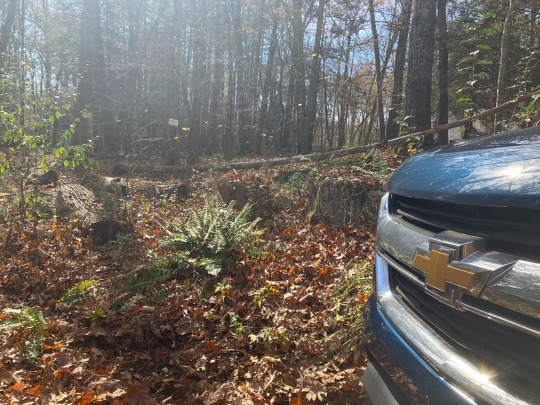
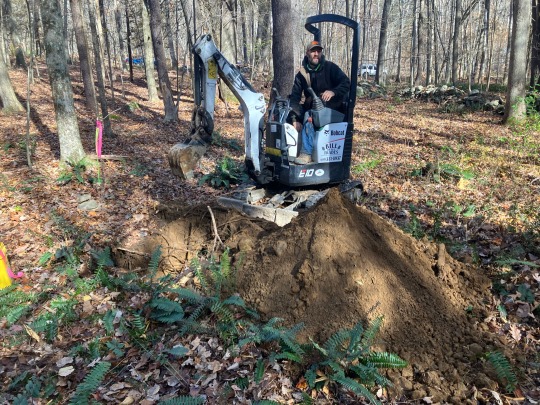
we broke ground today for the first permit! And our soil quality is impeccable 🥰
#homesteading#homestead#farm life#sustainability#sustainable energy#eco friendly#eco pod#country#country living#country life#cottage core#forest#forest core
23 notes
·
View notes
Text
youtube
Tamil Nadu's shrimp farmers are struggling with escalating costs. Replacing traditional fishmeal with insect feed, now leaves them with healthier shrimps and greater profits.
**********
Credits:
Supervising Producer: Nooshin Mowla
Field Producers: Roohi Sahay & Animesh Tiwari
Script Inputs: Roohi Sahay
Producer & Script: Ipsita Basu
Video Editor: Sujit Lad
Director of Photography: Hoshedar Shroff
Camera Assistant: Mantesh Kallimani
Camera (Tamil Nadu): Saraskanth TK
Voiceover: Rhicha Vyas
Executive Producer: Sannuta Raghu
#scroll.in#eco india#solarpunk#Tamil Nadu#shrimp#shrimp farming#fishmeal#insects#insect feed#Youtube
3 notes
·
View notes
Photo
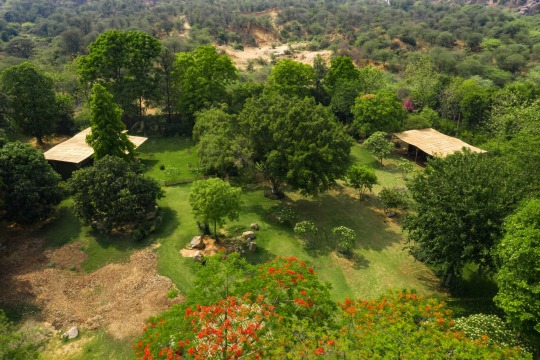
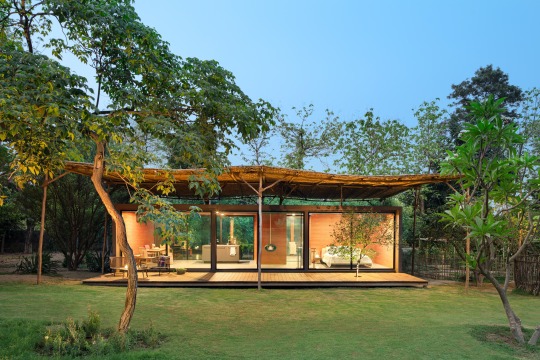
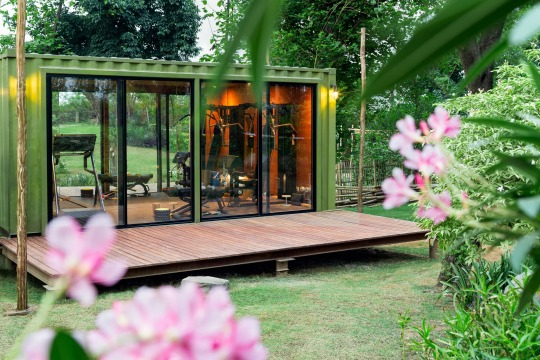







Gurugram farmhouse, Gurgaon, India,
Rakhee Shobhit Design Associates (RSDA),
Photographs: Noughts & Crosses
#art#design#architecture#interiors#farm#gurugram#farmhouse#gurgaon#india#container#shipping containers#RSDA#nature#sustainability#eco-friendly#minimal
141 notes
·
View notes
Text
Growing Microgreens: The Benefits of an Organic Edible Garden
This comprehensive ebook is your one-stop guide to cultivating a bounty of goodness on your windowsill or patio.

Inside, you'll discover:
• The magic of microgreens: Learn why these tiny powerhouses are packed with flavor and nutrition, and how to easily grow them year-round in minimal space.
• Organic gardening essentials: Master the fundamentals of creating a healthy and sustainable growing environment for your microgreens and edible plants.
• Step-by-step guidance: From sowing seeds to harvesting your bounty, we'll walk you through every step of the microgreen and organic gardening process.
• Gardening made simple: Design your dream organic edible garden, whether it's a windowsill box or a sprawling backyard plot.
• Plant power: Explore a variety of popular edible plants that thrive in organic gardens, along with harvesting and storage tips to enjoy your fresh produce for longer.
• Troubleshooting made easy: Learn how to identify and overcome common gardening challenges, ensuring your microgreens and plants flourish.
Go green and grow healthy with this empowering guide!
Bonus: Discover sustainable practices for an eco-friendly garden and tips for maximizing your harvest throughout the year.
Embrace the joy of growing your own food and unlock the vibrant world of microgreens and organic gardening today!
Unleash the Power of Tiny Greens: Growing Microgreens & Organic Gardening Success. Grow fresh, nutrient-packed microgreens and a thriving organic edible garden – right at home. Embrace the joy of growing your own food and unlock the vibrant world of microgreens and organic gardening today!
#books#nature#farming#science#agriculture#farm#skill#career#growing microgreens#organic gardening#edible garden#microgreen farming#sustainable gardening#homegrown produce#healthy living#indoor gardening#gardening tips#DIY gardening#nutrient-dense foods#fresh produce#natural food#eco-friendly gardening#sustainable agriculture#backyard farming#urban gardening
2 notes
·
View notes
Text
Behind The Label: Cage Free Eggs
Welcome back to the 2nd issue of my series 'Behind The Label", where I debunk common labels that brands use to seem more eco-friendly and mislead the consumer. On this issue, we will discuss "cage-free" eggs, along with other labels like "free range".
Before we get into the labels, let's set down some basics about the egg industry. I won't get too into the egg industry life cycle (I might make a different post), so I'll sum it up quickly. Male chicks are murdered, and females are sent to lay eggs for the rest of their lives, a life that is cut short after around 2 years when their egg-laying slows down. During their life, they're kept in battery cages with only around a sheet of paper of space for themself.
This is where these labels come in to save the day. They're advertising less cruelty for these hens, but of course, this isn't the case.
The term "Cage-free" simply means that the chicken is not confined to a battery cage, but that's it. Just because the hen is not confined doesn't mean her treatment is at all ethical. The space each cage-free hen has is between 1-1.25 square feet of floor space, which is barely bigger than the hen herself! So although they aren't caged, they're still crammed together indoors all day in an overcrowded and stressful environment.
Now what about free range? Like cage-free eggs, this also doesn't mean anything. With no legal qualifications to carry the label, the manufacturer is not obligated to fair treatment. There are, however, animal welfare organizations that can grant these labels that can grant some clarity on the conditions. Certified Human sets the minimum amount of outside space per hen as 2 square feet.
Now, these do not mitigate the other horrors of the egg industry. Cage-free and Free-range hens are still separated from their mothers before birth, their brothers are still murdered as a byproduct, and they are still murdered after 2 years.
On a good note, many US states and even some countries in the UK, along with Western and Eastern Europe are working to ban battery cages. In Arizona, California, Colorado, Massachusetts, Michigan, Nevada, Oregon, Rhode Island, Washington, and Utah, caged eggs are banned, including imports. Finland, Sweden, and Norway are 100% cage-free, and the UK, Italy, Germany, Denmark, Denmark, Belgium, Italy, Austria, and Switzerland are more than 80% cage-free as of 2023 (Courtesy of EggTrack 2023 Report)
Of course, Cage-free is not cruelty-free, but it is a step in the right direction. No one deserves to live as a product, and by being an informed consumer who isn't tricked by unregulated labels, you can help these innocent lives.
Of course, the most ethical thing will be either not buying eggs, or buying from local farms. Hens lie eggs regardless of human interference, it's their menstrual cycle.
#ecopunk#ecofriendly#solarpunk#sustainability#eco#animal rights#animal activism#plantbased#chickens#factory farming#animal cruelty
4 notes
·
View notes
Text
I keep seeing posts about getting ethical tails and I am begging you guys: get a faux fur one.
#fur fabric re the environment isn’t amazingly good#it’s plastic#there are eco alternatives coming out though#please do not support fur farms#vent
12 notes
·
View notes
Text
youtube
youtube
youtube
1 SELF SUFFICIENT ME: FARMERS UNDER ATTACK
2 GARDENING IN CANADA: ATTACK ON GARDENS
3 REDACTED: HANG ON, NOW BILL GATES IS COMING FOR YOUR GARDEN
Check out Jojo Mehta, founder of Stop Ecoside Now, actually talking with a straight face, about punishing people for farming. Another one wants people to adjust to Artificial Intelligence Food. All of this shite and very, very likely, billionaire-backed studies, slanted against independent food production. This is all coming from the same plague, that JUST unleashed Paganistic beliefs about Gender and sprayed the whole planet with those dangerous beliefs: the World Economic Forum. Davos. Israel. I will remind people that besides being a shady pervert, Bill Gates ' father was a lawyer for the MOSSAD.
"I call bullshit. I think this "story" is about corporate influence, control, and the continuing war on freedom, privacy, autonomy, self sufficiency and entrepreneurship. Homegrown food is just one of the examples of things that lunatics like Klaus Schwab and Bill Gates, hate." Twitter

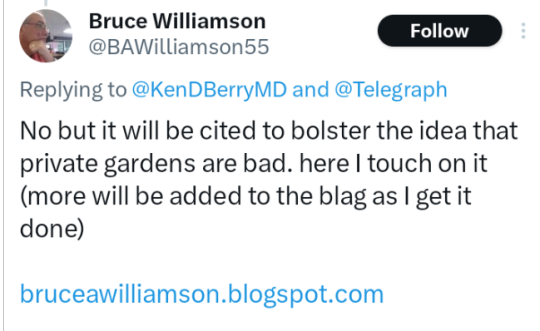
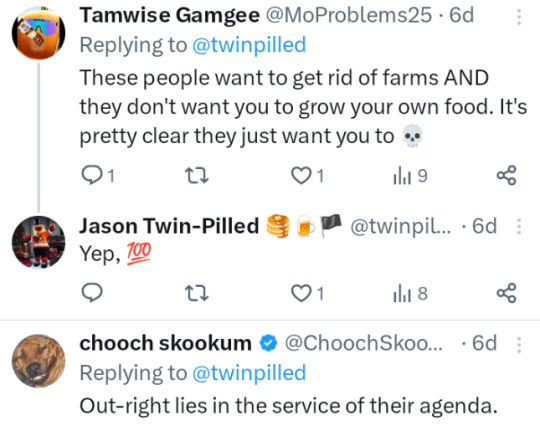




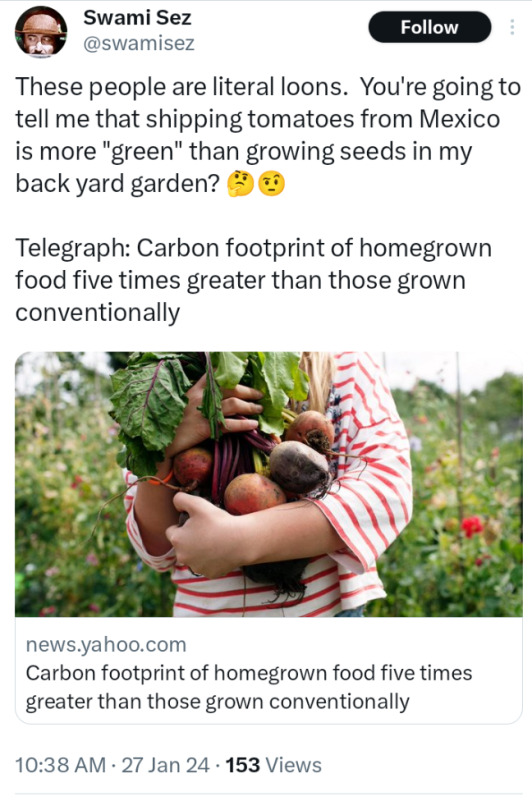


Wednesday, January 24, 2024
Hello, Nice to Meet Control You
Hello, Nice to Meet Control You: Introduction
Control. Control of others in one form or another has pervaded human history. Control has been exercised by individuals and groups over other individuals and groups. Thank you captain obvious.
This is a cursory look at various forms of control exercised over people. Both actual and possible forms are discussed. I do not pretend to be knowledgeable in the subject and are simply writing my thoughts. The footnotes and end notes are similar to references that I remember reading but not the actual reference. But I assume you know how to use a search engine. Also any typos and misspellings are due to my new gaming keyboard (not really but I need something to blame for my inability to type). Also I am using Libre Office to write this document and it has some issues with footnotes and endnotes or I just can’t use it as well as I use MS Word.
Humans have basic needs which are food, water, livelihood, and shelter. Control any one of these and you control the person. A newer and more effective route for control of others is media. Each of these topics will be discussed in turn. Additionally, the secondary means for controlling these needs will be examined.
I am not an expert in any field related to the topics nor am I any sort of revolutionary for pointing out these areas of control. I am exactly the opposite by discussing them I bring them to light so that they aren’t a problem.
The topics in this document are quickly developing. It may be obsolete before it is finished. I am not a writer. I am more verbally oriented.
Hello, Nice to Meet Control You: Food
We all eat food, all 8 billion of us. Think about that 8 billion people to feed. Most people do not realize that food distribution centers in major cities only have about three days of supply. The food supply is an attack surface for anyone wanting to control a populace. We have seen how easily the supply, among non-food things like TP, is disrupted by the Covid “pandemic”. As an example, the price of eggs rose to $5 per dozen from about $1.30.
This leads me to believe the food supply is a very frail and effective attack surface. Certainly anyone wishing to control a populations only need control the food supply chain.
The first obvious link in the food supply chain is production. Control how much food is produced and any condition from plentiful to famine can be realized. We have seen the direct attack on farmers using the specter of climate change. First in the Netherlands1 and subsequently in Germany2. The US isn’t safe from the assault on food as several animal rights and climate activist organizations have used climate change to to bolster their cause3. Claims of animal farming as being harmful to the environment is aiding the development of plant based “meat” produced in factories. This removes the production from a method that anyone could employ to one that is controlled completely by industry. The control of production is then complete once the end of animal farming is accomplished4. It is interesting that some of the very rich are buying farmland. I assume it is to provide raw materials to the food factories. Next stop distribution.
The dress rehearsal called the Covid-19 epidemic caused major disruptions in distribution of food and other comsumable products produced out side the US5. The most notable shortage was of paper products such as toilet paper. While it is true there were major supply chain issues the ultimate cause was a demand fueled by fear of shortage. In this way shortages are self fulfilling prophecies.
Controlling the food supply is a way to control the population. You can’t protest or fight back if you’re starving. Such bad behavior will be yield no food whereas good behavior will be rewarded with just enough to keep you alive.
Countermeasures
Grow some of your own food.
Eat nutritionally dense food if it is available. So that you require less food.
Source your food locally.
Counter-counter Measures
It will be made illegal to grow your own food. The argument will be the small farms produce too much greenhouse gases. Now we all know this is silly as home gardens do not require the burning of thousands of gallons of diesel fuel. You will also be accused of being selfish and an enemy of society. And someone named Greta will come to your house and punch you in the nuts (just checking to see if you’re actually reading this).
Doug Williamson Blogspot
1https://www.euronews.com/green/2023/11/30/dutch-farmers-could-be-paid-to-close-their-livestock-farms-under-new-scheme
2https://www.washingtonpost.com/world/2024/01/15/germany-farmers-protests-berlin/
3https://worldanimalnews.com/250-groups-urge-the-usda-to-address-the-reduction-of-meat-dairy-to-reduce-greenhouse-gas-emissions/
4Interesting that no one is complaining about Mark Zuckerberg’s herd. He feeds his cattle beer.Yet fermentation produces a lot of CO2. https://nypost.com/2024/01/11/news/mark-zuckerberg-to-raise-cows-on-beer-and-macadamia-nuts-on-hawaii-ranch/
5https://www.freightwaves.com/news/disrupted-supply-chains-strain-trade-among-us-mexico-and-canada
1https://www.telegraph.co.uk/news/2024/01/22/carbon-footprint-homegrown-food-allotment-increase
The Netherlands will be the center for global food innovation with the Global Coordinating Secretariat (GCS)
On January 27, 2021, the Government of the Netherlands, the World Economic Forum (WEF) and several public and private sector partners launched Food Innovation Hubs at the Davos Agenda 2021 meeting. The Food Innovation Hubs will be a key multistakeholder platform that will leverage technology and broader innovations to strengthen local innovation ecosystems for food systems transformation. Supported by multi-year funding from the Government of Netherlands, the initiative will feature a Global Coordinating Secretariat (GCS) based in the Netherlands.
https://investinholland.com/news/the-netherlands-and-the-world-economic-forum-launch-food-innovation-hubs-initiative/The Netherlands and the World Economic Forum Launch Food Innovation Hubs Initiative
“Global food insecurity has been rising again. This stresses the need to redesign how we produce and consume food. The Netherlands is committed to forming partnerships that will catalyze the innovations that are needed to address the food system challenges. I am therefore proud to announce that the Netherlands will host the Global Coordinating Secretariat of the Food Innovation Hubs,” said Mark Rutte, Prime Minister of the Netherlands.
With the arrival of the GCS, the Netherlands will leverage its innovation-driven economy to help advance global food security. Boasting an extensive ecosystem of companies and knowledge institutions in agrifood, horticulture, breeding, high-tech and ICT, the Dutch are ideally positioned to play a leading role in shaping our planet’s food system.
The Food Innovation Hubs will be a flagship initiative of WEF’s Food Action Alliance leading to the UN Food Systems Summit 2021, and beyond. The role of the GCS will be to coordinate the efforts of the regional Hubs as well as align with global processes and initiatives such as the UN Food Systems Summit.
Global center for food innovation comes to the Netherlands
The Food Innovation Hubs initiative places the Netherlands at the center of global food innovation and sustainability. Located in Wageningen at the heart of the Dutch agrifood ecosystem, the GCS will direct the further development of global regional Food Innovation Hubs from the Netherlands. The work of these regional Hubs is already underway, with more than 20 organizations leading the initiative across Africa, ASEAN, Colombia, India and the European hub in Foodvalley Wageningen. Oost NL, a regional partner in the Invest in Holland Network, will support the GCS in starting this work.
“Food sustains life and is at the heart of our planet. But if we are to feed 10 billion people by 2050 within planetary boundaries, the way the world produces and consumes food needs to change. Innovation is critical in enabling this systemic transformation,” said Dominic Waughray, Managing Director of WEF.
“As progress is accelerated towards meeting the Sustainable Development Goals, the World Economic Forum is committed to supporting collective action and promoting country led agendas through the Food Innovation Hubs in this pivotal year for food systems,” added Waughray.
With country-led approaches, the Hubs will drive both high-end and low-cost grassroots and other innovations that could have scalable impact, as well as innovations encompassing supply chains, partnerships and business models that can enable systemic change.
Source: World Economic Forum
28 January 2021
#Youtube#FARMERS UNDER ATTACK FROM WEF GLOBALISTS#GARDENING IS UNDER ATTACK#INDEPENDENT FOOD PRODUCTION#JOJO MEHTA#STOP ECOSIDE NOW PUSHES FOR PUNISHMENT OF FARMERS#WORLD ECONOMIC FORUM PUSHES FOR ARTIFICIAL INTELLIGENCE FOOD#BILL GATES IS AN ECO TERRORIST#FATHER LAWYER FOR MOSSAD#CANADA#GERMANY#AMERICA#AUSTRALIA#GET SERIOUS ABOUT LOCAL GOVERNMENTS AND THEIR RULES FOR SMALL SCALE FARMING#World Economic Forum#World Food Supply Initiative#Small Farming#Urban Farming#Food Autonomy#Carbom Footprints#USDA#People's Garden Initiative#Track American Gardens
3 notes
·
View notes
Text
Lucrative investment opportunities in sustainable agriculture. Discover how eco-friendly farming practices offer financial growth while contributing to a sustainable future.
2 notes
·
View notes
Text
Before you get all pompous about how a leather shoe is more eco-friendly than a plastic one:
Just how many plastic feed sacks do you think went into feeding that oh so biodegradeable cow?
This is not a leather over plastic argument: this is "we can't individually purchase our way out of ecocide".
#hold all manufaturers accountable for their waste#lobby government#organise#look at product lifecycle if you want to attempt to be eco-friendly but you won't ever know how it was shipped or fed or whatever#farming and shipping use SO MUCH plastic the end product is irrelevent to the overall impact#SOME not all leather is a byproduct but if that makes you feel okay about cattle farming when it's a huge greenhouse gas emitter...#then it's not helping
4 notes
·
View notes
Text
The Benefits of Using Coco Coir for Successful Mushroom Cultivation
Introduction: Mushroom cultivation is a fascinating and rewarding endeavor that has gained popularity among enthusiasts and commercial growers alike. While mushrooms don't grow in traditional soil, the choice of substrate plays a pivotal role in their growth and development. One substrate that has gained prominence in recent years is coco coir, a natural byproduct of coconut processing. In this blog post, we'll explore why coco coir is an excellent choice for cultivating mushrooms and how its unique properties contribute to successful cultivation.
1. Exceptional Moisture Retention: Coco coir, derived from coconut husks, is known for its exceptional water-holding capacity. This feature is crucial for mushroom cultivation, as maintaining consistent moisture levels is essential for mycelium colonization and subsequent fruiting. Unlike some other substrates, coco coir retains moisture while still allowing excess water to drain, creating an ideal environment for healthy mycelial growth.
2. Optimal Texture: The texture of coco coir is another factor that makes it well-suited for mushroom cultivation. Its fibrous structure provides ample surface area for mycelium to spread and establish a robust network. This is particularly important during the colonization phase when mycelium growth needs a suitable substrate to expand.
3. pH Neutrality and Versatility: Coco coir typically has a near-neutral pH, which can be advantageous when growing mushrooms. It provides a stable starting point for adjusting pH levels to suit the specific needs of different mushroom species. Moreover, coco coir's neutral nature allows growers to customize nutrient supplementation more effectively, creating an optimal environment for mushroom growth.
4. Resistance to Contaminants: Contaminants can quickly derail a mushroom cultivation project. Coco coir's natural composition and structure offer some resistance to common contaminants, reducing the risk of unwanted organisms taking over the substrate. This feature makes coco coir a reliable choice, especially for beginners who are learning the ropes of mushroom cultivation.
5. Eco-Friendly and Sustainable: Coco coir is a renewable resource, making it an environmentally conscious choice for substrate material. As coconut husks are a byproduct of the coconut industry, using coco coir also helps in reducing waste and promoting sustainable practices.
6. Ease of Sourcing and Preparation: Coco coir is widely available from gardening centers, agricultural suppliers, and online stores. It usually comes in a dehydrated form, making it easy to transport and store. When ready to use, it only requires rehydration with water, a straightforward process that saves time compared to preparing other substrates.
Conclusion: In the world of mushroom cultivation, choosing the right substrate can significantly impact the success of your endeavors. Coco coir stands out as an exceptional choice, offering benefits such as optimal moisture retention, texture, versatility, and resistance to contaminants. Whether you're a novice cultivator or an experienced grower, integrating coco coir into your mushroom cultivation journey can enhance your chances of achieving healthy and bountiful harvests.
#Mushroom Cultivation#Coco Coir#Substrate#Mushroom Growing#Mushroom Farming#Fungal Cultivation#Horticulture#Sustainable Agriculture#Moisture Retention#pH Neutrality#Eco-Friendly#Contaminant Resistance#Mycelium Growth#Organic Gardening#Agricultural Sustainability#Gardening Tips#Mushroom Enthusiast#Mushroom Farm#Mushroom Harvest#Mushroom Species
4 notes
·
View notes
Text
i will never apologize for being genuinely into cottagecore HOWEVER my pinterest board for cottage planning DOES look like i’m preparing for the apocalypse
#girl why u got so many fruit preserves . mind your business#bees speaks#also just to say. cottagecore as in i’d like to live in a lush semi-rural home with at least an acre of garden plot and ideally a greenhouse#and chickens ! and goats ! and sheep !#i want to be able to provide for myself and others if they need#and i want to live close to nature lmao i love the city but she is suffocating me#also gardening funnnn#omg also i will never stop chasing the high of an irish eco farm with a mule a ton of chickens and an apiary. i wish i were her
4 notes
·
View notes
Text
In the last 16 years, there have been more than 252,000 recorded farmer suicides in India. That's about 1 farmer every 30 minutes, and it's the largest recorded wave of suicides in history.
- The True Cost - The Truth of the Clothing Industry
#q#quotes#the true cost#mindful consumption#mindful living#mindfulness#tw suicide#fashion industry#textile industry#cotton farming#exploited workers#holistic leveling up#leveling up#solarpunk#ecofeminism#eco#eco conscious#fast fashion#haute couture#that girl#green juice girl#green living#sustainability#sidewalkchemistry
3 notes
·
View notes
Text
youtube
Every week, Eco India brings you stories that inspire you to build a cleaner, greener and better tomorrow.
On the outskirts of Delhi, social enterprise Urban Farms supplies farmers with organic compost. Made from paddy stubble and other crop waste, it lets farmers forego chemical fertilizers and pesticides that degrade the soil.
Supervising Producer: Nooshin Mowla
Field Producer & Script: Jessica Goel
Video Editor: Richard Kujur
Associate Producer: Ipsita Basu
Director of Photography: Richard Kujur
Production Assistant: Aakriti Thatal
Voiceover: Chandy Thomas
Executive Producer: Sannuta Raghu
#Scroll.in#eco india#solarpunk#india#Delhi#Urban Farms#farming#farm#agriculture#compost#composting#organic compost#pesticides#fertilizer#chemical fertilizer#Youtube
3 notes
·
View notes